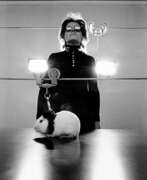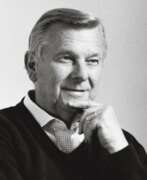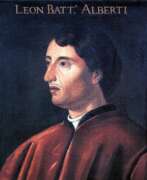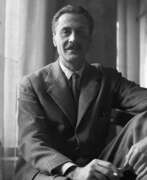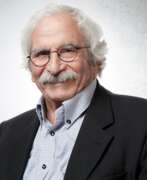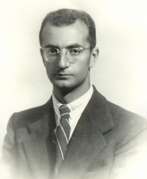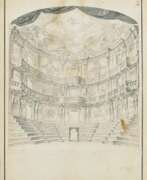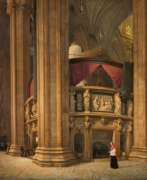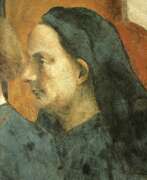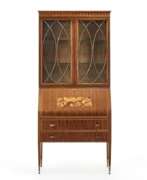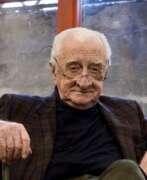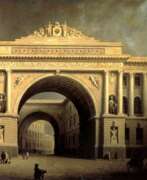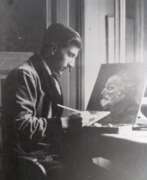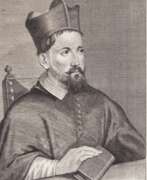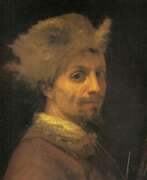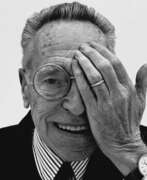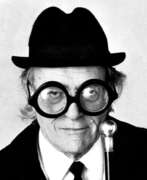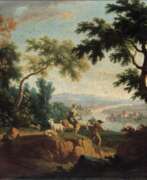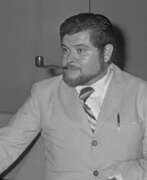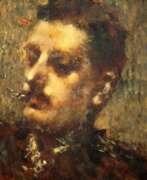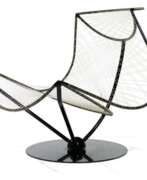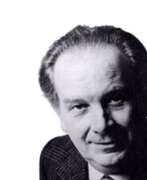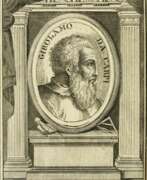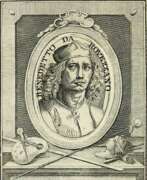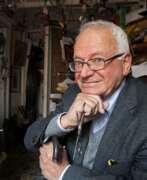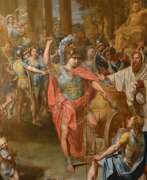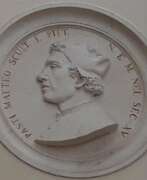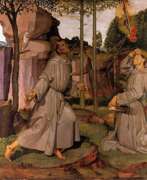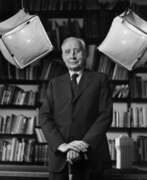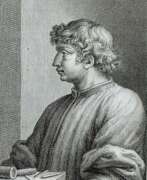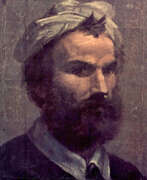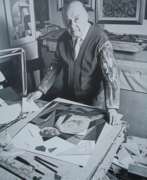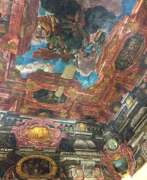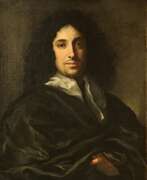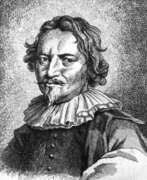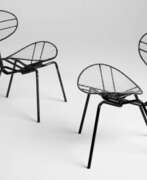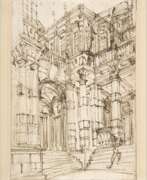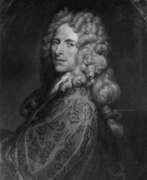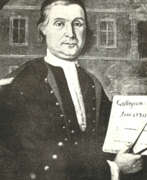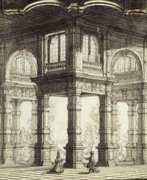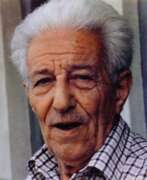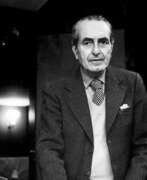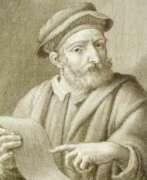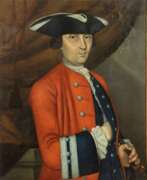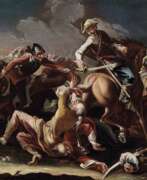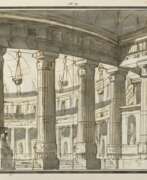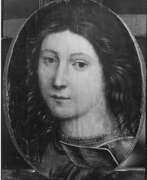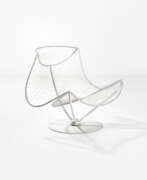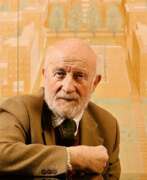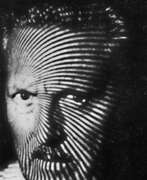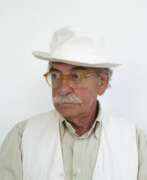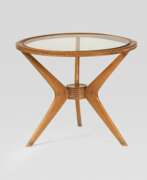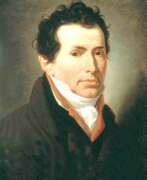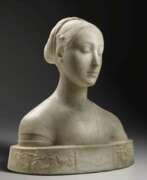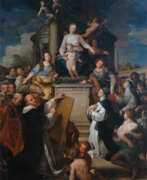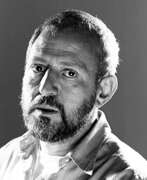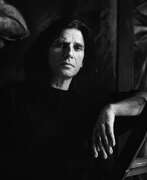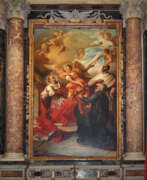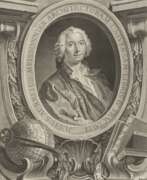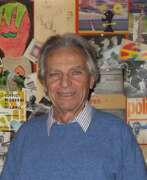Architects Italy
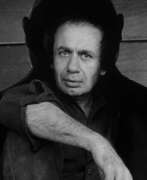

Vito Acconci was an American artist, designer, and architect. He is best known for his pioneering work in the field of performance art and for his provocative installations that explore the relationship between the human body and space.
Acconci received a Bachelor of Arts degree from Holy Cross College in 1962. He later earned a Master of Fine Arts degree from the University of Iowa.
In the late 1960s and early 1970s, Acconci became known for his groundbreaking performance works, which often involved the artist subjecting his own body to various forms of physical and psychological stress.
In the 1980s and 1990s, Acconci shifted his focus to installation art, creating immersive environments that challenged viewers' perceptions of space and their own bodies. He also worked as a designer and architect, creating public sculptures and buildings around the world.
Acconci's work has been exhibited in major museums and galleries worldwide, including the Museum of Modern Art in New York and the Venice Biennale. He received numerous awards and honors for his contributions to contemporary art, including the Skowhegan Medal for Sculpture in 1995.
His legacy as an influential and provocative artist continues to be felt in the contemporary art world today.
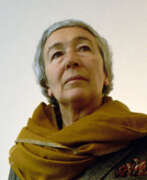

Gaetana (Gae) Aulenti was an Italian architect and designer who was active in furniture design, graphic design, stage design, lighting design, exhibition and interior design. She was known for her contributions to the design of important museums such as the Musée d'Orsay in Paris (in collaboration with ACT Architecture), the Contemporary Art Gallery at the Centre Pompidou in Paris, the restoration of Palazzo Grassi in Venice, and the Asian Art Museum of San Francisco (in collaboration with HOK Architects). Aulenti was one of only a few women architects and designers who gained notoriety in their own right during the post-war period in Italy, where Italian designers sought to make meaningful connections to production principles, and influenced culture far beyond Italy. This avant-garde design movement blossomed into an entirely new type of architecture and design, one full of imaginary utopias leaving standardization to the past.
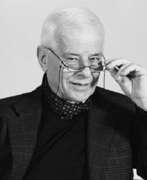

Carlo Bartoli is an Italian architect and designer. Author of numerous projects, such as the Gaia chair, included in the permanent design collection of the MoMA in New York and the Milan Triennale Design Museum, and the 4875 chair for Kartell, the world's first made of polypropylene, as well as part of the design collection of the Pompidou Center in Paris.


Mario Bellini is an Italian architect and designer. After graduating from the Polytechnic University of Milan in 1959, Bellini pursued a career as an architect, exhibition designer, product designer, and furniture designer, during the Italian economic boom of the late 20th century. Bellini has received several accolades in a variety of design fields, including eight Compasso d'Oro awards, and the Gold Medal for Lifetime Achievement by the Triennale di Milano. In 2019, the Italian President of the Chamber of Deputies, Roberto Fico, awarded Bellini a career medal, in recognition of his contributions to Italian architecture and design.
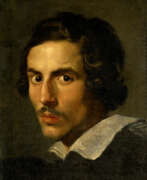

Giovanni Lorenzo Bernini, an Italian artist, is celebrated as one of the most remarkable sculptors and architects of the Baroque era. Born in Naples in 1598, Bernini's family moved to Rome when he was a child, where he spent most of his life shaping the city's artistic landscape. His prodigious talent emerged early, evident in works created in collaboration with his father, Pietro Bernini, and soon caught the attention of influential patrons like Cardinal Scipione Borghese and Pope Paul V.
Bernini's work, characterized by dynamic and exuberant style, spanned various genres including portraiture, tomb sculpture, and religious and mythological representations. His ability to turn marble into lifelike figures and scenes, blending realism with emotional intensity, was unparalleled. Key works like "Aeneas and Anchises," "Pluto and Proserpina," and "Apollo and Daphne" exemplify this mastery.
Not confined to sculpture, Bernini was also an accomplished architect, contributing significantly to the architectural landscape of Rome. His involvement with St. Peter's Basilica, notably the Baldacchino and the design of St. Peter's Square, reflect his vision of merging architecture with sculpture to create a cohesive and impactful experience. His work on the Cornaro Chapel, including the famous "The Ecstasy of Saint Teresa," showcases this integration, combining sculpture, architecture, and light to stunning effect.
Bernini's influence extended beyond Rome. In 1665, he was invited by Louis XIV to France to work on the Louvre, though his architectural designs were not realized. His portrait bust of Louis XIV, however, remains a testament to his skill in capturing not just the likeness but the essence of his subjects.
A man of deep faith, Bernini's works often reflected his religious devotion, though he was also known for his caricatures and playful sketches, revealing a lighter side to his personality. His artistic legacy, characterized by the fusion of various art forms and the dramatic use of light and space, continues to influence and inspire.
For collectors and experts in art and antiques, Bernini's works remain a pinnacle of Baroque artistry, a testament to his innovative spirit and technical brilliance. His pieces, found in museums and galleries, continue to draw admiration for their emotional depth and exquisite craftsmanship.
Stay updated on new discoveries and sales of Bernini's works by signing up for our newsletter, exclusively focused on his art and upcoming auction events.


Michelangelo di Lodovico Buonarroti Simoni, known simply as Michelangelo, was an Italian sculptor, painter, architect, and poet who played a significant role in the High Renaissance period. Born on March 6, 1475, in Caprese, Italy, Michelangelo's works are a testament to his mastery in various artistic realms, defining him as a quintessential Renaissance man.
Michelangelo's fame began early in his career, most notably with his sculptures "Pietà" (1499) and "David" (1501), both completed before he turned thirty. Despite his self-perception primarily as a sculptor, Michelangelo made an indelible mark in painting, particularly with the frescoes in the Sistine Chapel. These works include the scenes from Genesis on the chapel's ceiling and "The Last Judgment" on its altar wall, showcasing his innovative use of physical realism and psychological tension.
Among his most famous works, the "David" statue, now housed in the Accademia Gallery in Florence, and the "Pietà," located in St. Peter's Basilica, stand out for their intricate detail and emotional depth. Michelangelo's ability to imbue life into marble and his thoughtful consideration of light and shadow in painting were revolutionary. His techniques in fresco painting, such as the buon fresco method used in the Sistine Chapel, where he painted on wet plaster, were groundbreaking for their time.
Despite his temperamental nature, Michelangelo was deeply religious and dedicated to his art, often eschewing the use of assistants. His works were not only recognized and admired in Italy but also attracted attention from abroad, including the Ottoman Empire. Michelangelo's influence extended beyond his lifetime, significantly impacting the development of Mannerism and the Baroque style.
For art collectors and experts, Michelangelo's works remain a pinnacle of artistic achievement. His ability to blend realism with expressive physicality in both sculpture and painting set new standards in art. His works in major museums and galleries worldwide continue to inspire and awe viewers, reflecting the enduring legacy of his genius.
For those interested in the world of art and antiques, staying informed about Michelangelo's works and their influence on modern art is essential. To receive updates on new product sales and auction events related to Michelangelo, sign up for our newsletter. This subscription is an excellent opportunity for enthusiasts and experts alike to stay connected with the ongoing legacy of one of history's greatest artists.
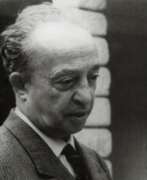

Tomaso Buzzi was an Italian architect and designer.
He also worked as a furniture and glass designer and wrote articles in Domus and Dedalo. Buzzi's slow departure from modernism accentuated after 1945, when he worked mainly as a private architect for the Italian aristocracy and the big bourgeoisie of the Volpi, Agnelli, etc.
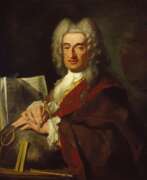

Luca Carlevaris was an Italian painter and engraver working mainly in Venice. He pioneered the genre of the cityscapes (vedute) of Venice, a genre that was later widely followed by artists such as Canaletto and Francesco Guardi.
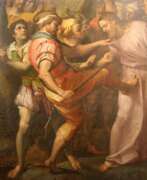

Giovanni Battista Castello was an Italian historical painter. His best-known works are the paintings on the vault of the Basilica della Santissima Annunziata del Vastato. He was an architect and sculptor as well as painter. He painted of the Martyrdom of St. Sebastian in the monastery of San Sebastiano. He worked on various projects with his friend Cambiaso, including in a chapel for the Duomo di San Lorenzo.
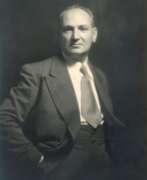

Giannino Castiglioni was an Italian sculptor and medallist. He worked mostly in monumental and funerary sculpture; his style was representational, and far from the modernist and avant-garde trends of the early twentieth century.
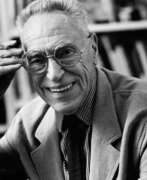

Achille Castiglioni was an Italian architect and designer of furniture, lighting, radiograms and other objects. As a professor of design, he advised his students "If you are not curious, forget it. If you are not interested in others, what they do and how they act, then being a designer is not the right job for you."
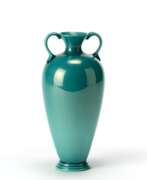

Giuseppe Kjachig is an artist outside the academic framework, was extremely versatile: a mosaicist, architect, decorator and painter, he was born in Russia because his parents were commercially active there, but retained Italian citizenship.
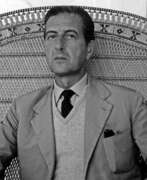

Fabrizio Clerici was an Italian painter, draftsman, illustrator, scenographer and architect.
Clerici earned a degree in architecture and was greatly influenced by antiquities, Renaissance and Baroque painting and architecture. In 1943, Clerici held his first solo exhibition at the Galleria dell'Arte Cairola in Milan, featuring drawings, watercolors, lithographs and etchings. His first book illustrations belong to the same period.
In 1947, Clerici began a prolific career in theater, ballet and opera with his debut as a stage designer in a production of George Bernard Shaw's play Mrs. Warren's Profession. The following year he participated for the first time in the Venice Biennale. There he met Salvador Dalí and created the sets and costumes for Igor Stravinsky's Orpheus, which was performed at the La Fenice Theater. In 1949 he created large-scale architectural fantasy paintings.
The further life of the multifaceted artist Fabrizio Clerici was full of work in a variety of fields of art, creative successes and exhibitions. His work has been exhibited in many museums in the United States, including MoMA and the Guggenheim Museum, as well as in France, such as the Pompidou Center.
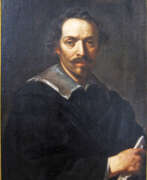

Pietro da Cortona, born as Pietro Berrettini, was an eminent figure in the Italian Baroque movement. His multi-faceted genius encompassed painting, architecture, and design, earning him a reputation second only to Bernini in the Roman Baroque style. Cortona's journey in art commenced in Rome around 1612, where his talents flourished under the patronage of influential families like the Barberini.
Pietro da Cortona's masterful frescoes in the church of S. Bibiana, commissioned by Urban VIII, set the tone for his illustrious career. His most iconic work, the colossal fresco "Allegory of Divine Providence and Barberini Power" in the Gran Salone of the Palazzo Barberini, epitomizes his skill in creating grandiose, illusionistic art. This piece, commenced in 1633 and completed in 1639, is a testament to his belief in the epic scale of history painting, a view he defended in a notable debate with Andrea Sacchi.
In 1637, Pietro da Cortona's artistic journey took him to Florence at the behest of Ferdinand II de' Medici, Grand Duke of Tuscany. Here, in the Palazzo Pitti, he created frescoes for the Planetary Rooms, combining allegorical themes with lush stucco work, significantly influencing the Italian and French decorative arts.
Pietro da Cortona's contributions to architecture were equally significant. His architectural masterpiece, the church of SS. Martina e Luca in Rome, exemplifies his ability to create grand structures with a unified Baroque vision. His architectural prowess, though less correlated with his painting style, made a lasting impact through its emphasis on form rather than ornament.
For art collectors and enthusiasts, Pietro da Cortona's works offer a rich tapestry of Baroque artistry, blending grandeur, realism, and allegory. His frescoes, paintings, and architectural designs continue to captivate audiences, symbolizing the opulence and dynamism of the Baroque era.
To stay updated on the latest insights and collections related to Pietro da Cortona, consider subscribing to our updates. Stay informed about new sales, exhibitions, and auction events related to this master of the Baroque style.
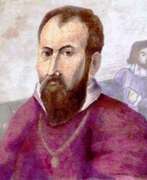

Melozzo da Forlì, an influential Italian Early Renaissance painter and architect, is celebrated for his pioneering work in the realm of fresco painting and his remarkable use of foreshortening, a technique that gives the illusion of depth in a two-dimensional space. Born on June 8, 1438, in Forlì, Italy, Melozzo was a leading figure in the art world of his time, leaving an indelible mark on the Renaissance culture and art landscape.
His tenure in Rome, from around 1472-74, was particularly fruitful, marking a period where he created some of his most notable works. The fresco "Sixtus IV Appointing Platina as Librarian of the Vatican Library," completed in 1477 and now housed in the Pinacoteca Vaticana, stands as a testament to his mastery of perspective and architectural representation. Melozzo's work in the Basilica dei Santi Apostoli in Rome, particularly the fresco depicting the Ascension of Christ, is another significant contribution, showcasing his ability to portray figures with dynamic realism and depth.
Throughout his career, Melozzo also engaged in architectural design and was involved in the construction of Palazzo Altemps for Girolamo Riario in Rome, demonstrating his versatile talent beyond painting. His influence extended to his pupils, notably Marco Palmezzano, and his style and techniques continued to inspire future generations, including Raphael and Michelangelo.
Melozzo's legacy is characterized by his contributions to the development of pictorial art, especially his innovative use of perspective and foreshortening. Although many of his works have been lost or damaged over time, those that survive continue to be studied and admired for their artistic and technical prowess. His final years were spent in his hometown of Forlì, where he died on November 8, 1494, leaving behind a body of work that continues to be celebrated for its influence on the Renaissance art movement.
For collectors and experts in art and antiques, Melozzo da Forlì's work represents a pivotal moment in the history of Renaissance art, embodying the transition towards more dynamic and realistic representations. If you're keen on exploring the contributions of this remarkable artist further, consider signing up for updates related to Melozzo da Forlì. This subscription will keep you informed about new product sales and auction events, offering a unique opportunity to connect with the rich heritage of Renaissance art and culture.
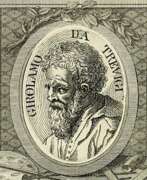

Girolamo da Treviso the Younger was an Italian painter whose versatile talent shone brightly during the Renaissance. Born in Treviso, his artistic journey was marked by a profound ability to blend the innovative techniques of the High Renaissance with the rich traditions of Italian painting.
Renowned for his expertise in a variety of subjects, Girolamo's works ranged from religious narratives to mythological scenes, each imbued with a depth of emotion and meticulous attention to detail. His style was characterized by dynamic compositions, a masterful use of perspective, and a vibrant palette that brought his figures and landscapes to life.
Among his notable contributions to the art world, Girolamo da Treviso's altarpieces and frescoes stand out for their artistic and historical significance. These works, preserved in some of the most prestigious museums and churches across Italy, continue to attract art lovers and scholars, captivated by their beauty and the story of their creator.
For collectors and experts in art and antiques, Girolamo da Treviso II represents an intriguing figure whose oeuvre offers a window into the transformative period of the Renaissance. His paintings are not only valued for their aesthetic appeal but also for the insights they provide into the cultural and artistic developments of the 16th century.
To explore the rich legacy of Girolamo da Treviso II and stay informed about the latest discoveries and auction events related to his work, signing up for updates is a must. This subscription will keep you at the forefront of new opportunities to appreciate and acquire pieces by this Renaissance master, ensuring you never miss a chance to add to your collection.
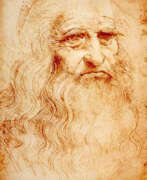

Leonardo da Vinci was an Italian polymath of the High Renaissance, celebrated as a painter, draughtsman, engineer, scientist, theorist, sculptor, and architect. His remarkable abilities and innovative thinking made him an epitome of the Renaissance humanist ideal. Born in Vinci, near Florence, in 1452, Leonardo was educated in Florence by Andrea del Verrocchio, a renowned painter and sculptor. He began his career in Florence, later working in Milan, Rome, and France, where he died in 1519.
Da Vinci is revered for his artistic mastery, technological innovation, and scientific inquiry. Despite having fewer than 25 major works attributed to him, including several unfinished ones, his influence on Western art is profound. His magnum opus, the "Mona Lisa," housed in the Louvre Museum, Paris, is considered the world's most famous painting. "The Last Supper," his most reproduced religious painting, showcases his mastery of dramatic narrative and pictorial illusionism. Both paintings exhibit Leonardo's unique ability to convey complex human emotions and his innovative use of techniques like sfumato and chiaroscuro.
Leonardo's interests extended far beyond fine art. He was a visionary in multiple fields, including anatomy, physics, architecture, and mechanics. His notebooks reveal designs for machines like bicycles, helicopters, and military tanks, centuries ahead of their time. However, due to his diverse interests, he left many projects and paintings incomplete. Leonardo's final years were spent in France, where he continued his artistic and scientific pursuits until his death.
For collectors and experts in art and antiques, Leonardo da Vinci remains a figure of endless fascination. His works not only embody the pinnacle of Renaissance art but also provide insights into the era's scientific and philosophical inquiry. To stay updated on new sales and auction events related to Leonardo da Vinci, sign up for our newsletter. This subscription is a gateway to exploring the rich legacy of this unparalleled artist and inventor.


Gino De Dominicis was an Italian artist.
Controversial protagonist of Italian art after the Second World War, he used various techniques and defined himself as a painter, sculptor, philosopher and architect. His work tends to become independent of both fashions and neo-avant-garde groups. Therefore, it cannot be framed in a specific artistic current: neither in Arte Povera, nor in the Transavanguardia, nor in the conceptual art, which rejected.


Ludovico Dias de Santigliana is an Italian artist, architect and designer.
He married Anna Venini, daughter of Paolo Venini, and became general director of Venini & C. after the owner's death and until 1985, when with the same responsibilities he moved to EOS, for which he designed a number of important collections.


Giotto di Bondone, an Italian painter and architect, emerged as a pivotal figure in the transition from medieval to Renaissance art. His mastery in painting is best exemplified in the Scrovegni Chapel in Padua, also known as the Arena Chapel, where his fresco cycle depicting the Life of the Virgin and the Life of Christ is considered a seminal work of the Early Renaissance. This chapel, completed around 1305, highlights Giotto's innovative approach to art, breaking away from the Byzantine style that dominated the period. His techniques in depicting life and emotion in his works were revolutionary, setting a new direction in Western art.
Despite his acclaimed works, many aspects of Giotto's life remain shrouded in mystery and controversy, including his exact birthplace and the full extent of his apprenticeship. Traditionally believed to have been born in a farmhouse in either Colle di Romagnano or Romignano, recent research suggests he was born in Florence, the son of a blacksmith. His birth year is also uncertain, with estimates ranging from 1266/67 to 1276.
Giotto's early life, as narrated by Giorgio Vasari, is filled with anecdotal charm. He was supposedly discovered by the renowned Florentine painter Cimabue while drawing pictures of his sheep on a rock, so lifelike that Cimabue immediately recognized his talent. This encounter led to Giotto's apprenticeship under Cimabue, although this story, like many others about his early life, is debated by scholars.
In addition to the Scrovegni Chapel, Giotto's notable works include the decoration of various chapels and churches across Italy, such as in Assisi, Rome, Florence, and Naples. His Crucifixion panel and the Nativity scene are particularly celebrated for their depth and emotional intensity. Giotto was also an architect; in 1334, he was chosen to design the campanile of the Florence Cathedral, reflecting his reputation as a foremost artist.
Giotto's influence extended beyond his lifetime, inspiring future Renaissance artists with his naturalistic representation of human figures and his skill in conveying perspective and emotion. His works in the Peruzzi Chapel in Florence, particularly the Life of St. John the Baptist, are examples of this legacy.
In summary, Giotto di Bondone stands as a monumental figure in art history, his contributions marking the dawn of the Renaissance and forever altering the course of Western art. His ability to infuse his works with realism and emotional depth set a new standard in artistic expression, influencing generations of artists to come.
For those interested in the art and history of Giotto di Bondone, updates on new product sales and auction events related to his work are available. Sign up to stay informed about these opportunities and to deepen your appreciation of this pivotal artist's legacy.
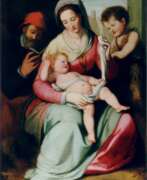

Santi di Tito was one of the most influential and leading Italian painters of the proto-Baroque style – what is sometimes referred to as "Counter-Maniera" or Counter-Mannerism. Santi completely rejected the maniera of Bronzino, and embraced a classical Reformist and naturalistic style. Santi's mature style is reflected in his masterpiece of the Vision of Saint Thomas Aquinas, also known as Saint Thomas Dedicating His Works to Christ located in the church of San Marco in Florence.


Maurizio Duranti is a contemporary Italian artist, architect and designer. He is engaged in industrial design, designing for numerous companies in all sectors of the home. Duranti is a ten-time winner of the Chicago Good Design Award and was honoured at the Compasso d'Oro in Milan.
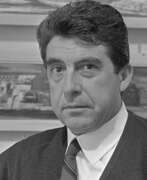

Salvatore Fiume is an Italian artist known for his diverse talents including painting, sculpture, ceramics and graphic design.
Salvatore Fiume's artistic style has evolved throughout his career, reflecting various influences. Fiume's paintings are characterised by vivid colours, dynamic brushwork and a sense of emotional intensity. He was also a skilled sculptor and created many sculptures in different materials.
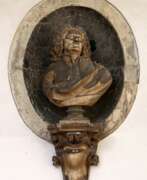

Giovanni Battista (Giambattista) Foggini was an Italian sculptor active in Florence, renowned mainly for small bronze statuary.
Foggini's pupils included Fernando Fuga, his nephew Filippo della Valle, Balthasar Permoser, Giovacchino Fortini and Giovanni Baratta. Massimiliano Soldani Benzi was a contemporary student with Foggini in Rome and also active in small bronze sculpture.
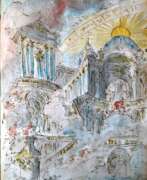

Domenico Fossati was an Italian artist, painter, architect and stage designer of the second half of the 18th century.
Fossati studied painting at the Academy of Fine Arts in Venice. His works as a set designer and scenographer can be found in the theaters and palaces of Venice, Padua and other Italian cities, as well as at La Scala in Milan. Fossati's folios with his ink sketches of stage sets, details of rococo ornamentation, and drawings of fantastic creatures inhabiting an outlandish world have also survived.
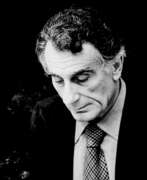

Gianfranco Frattini was an Italian architect and designer. He is a member of the generation that created the Italian design movement in the late 1950s through the 1960s and is considered to have played a major role in shaping it.
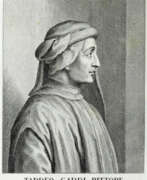

Taddeo Gaddi was a renowned medieval Italian painter and architect. He was a pupil and a most faithful follower of the illustrious Florentine master Giotto. Despite lacking Giotto’s comprehensive aesthetic vision, Gaddi emerged as the leading Florentine painter for three decades following his mentor's death.
Taddeo Gaddi’s most acclaimed work is the cycle of 'Stories of the Virgin' in the Baroncelli Chapel of the Basilica of Santa Croce in Florence, created between 1328 and 1338. This work is celebrated for its dynamism, pronounced foreshortening, dramatic effects of light, and an interest in narrative, showcasing his expertise in both painting and architectural elements. He is also credited with painting the cabinet tiles in the sacristy of the same church, now divided among several museums including the Galleria dell'Accademia in Florence, and museums in Munich and Berlin.
Taddeo Gaddi's style shows a clear influence from his master Giotto, yet he added his own experimentation, particularly in architectural backgrounds. His works, such as the ‘Madonna in Bern’, ‘Adoration of the Magi in Dijon’, and ‘Stories of Job’ in Pisa, demonstrate his mastery of Giotto's new style. He also contributed works like 'The Stigmatization of Saint Francis' to Harvard Art Museums, and 'Madonna del Parto' and 'Polyptych in Santa Felicita's sacristy' in Florence.
Taddeo Gaddi enjoyed a comfortable economic situation throughout his life, especially in his later years. He passed away in 1366 and was buried in Santa Croce, leaving behind a legacy as one of the most influential men in Florentine artistic culture. His work in the Basilica Santa Croce provides a canonical viewing of Gaddi’s style and his proficiency with color and light.
For collectors and experts in art and antiques, Taddeo Gaddi's works offer an important perspective on the transition from medieval to Renaissance art in Florence. His blend of Giotto's influence with his unique approach to color and narrative makes his works a valuable addition to any collection that values the rich history of Florentine art.
To stay updated on sales, exhibitions, and auction events related to Taddeo Gaddi's art, consider signing up for updates. This subscription will provide you with the latest information on acquiring pieces from this influential Florentine artist.
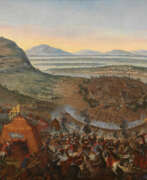

Frans Geffels, known in Italy as Francesco Geffels (25 August 1624 – 18 February 1694) was a Flemish painter, printmaker, architect, stage designer and designer of ephemeral structures for solemn and festive occasions. After training in his native Antwerp, he was mainly active in Mantua, where he was prefetto delle fabbriche to the Duke, a role that gave him the direction of the artistic and construction activities undertaken by the Ducal court. He worked also on projects for the local aristocratic class of Mantua. In addition, he completed projects for the Liechtenstein princes and for the imperial court in Vienna.
He was both a canvas and fresco painter. He created portraits, history subjects, military scenes, architectural scenes and genre art, in particular merry companies. Geffels is mainly remembered as the designer of some of the key examples of Baroque architecture in Mantua.
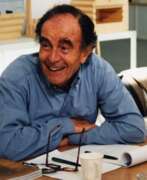

Vico Magistretti was an Italian industrial designer, known as a furniture designer and architect. A collaborator of humanist architect Ernesto Nathan Rogers, one of Magistretti's first projects was the "poetic" round church in the experimental Milan neighborhood of QT8. He later designed mass-produced appliances and furniture for companies such as Cassina S.p.A., and won several awards, including the Gold Medal of the Chartered Society of Industrial Artists & Designers in 1986.


Angelo Mangiarotti was an Italian architect and industrial designer. His designs were mostly for industrial buildings and railway stations. In 1994 he received the Compasso d'Oro award of the Associazione per il Disegno Industriale for his lifetime of achievement.
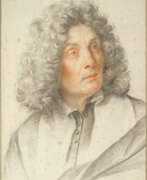

Carlo Maratta, an Italian painter, was a prominent figure in the Roman school of art during the late 17th century. Known for his classical approach to Baroque painting, Carlo Maratta's works were deeply influenced by the styles of Raphael and Andrea Sacchi, blending classical grandeur with Baroque expressivity. His training under Sacchi and subsequent exposure to Pietro da Cortona's coloristic style significantly shaped his artistic development.
Carlo Maratta's career flourished with a series of public and official commissions, making him a leading painter in Rome, especially after Bernini's death in 1682. His portfolio includes religious paintings, altarpieces, portraits, and fresco cycles, with a notable emphasis on paintings of the Madonna and Child, which reinterpreted High Renaissance motifs. His work was highly esteemed across Europe, influencing not only Italian art but also attracting the attention of English visitors on the Grand Tour.
One of Carlo Maratta's significant contributions to the art world was his involvement in painting restoration towards the end of his career, including works by Raphael and Carracci. This phase underscored his deep connection to the classical art tradition. Maratta passed away in Rome in 1713, leaving behind a legacy that continued to be celebrated in art history.
For art enthusiasts, collectors, and experts, Carlo Maratta's work offers a window into the transition between the Baroque and the emerging Rococo style, embodying a blend of dynamism and classical restraint. His paintings, many of which remain in situ in Roman churches, offer a testament to his enduring influence on Baroque classicism.
To stay updated on exhibitions and insights into Carlo Maratta's works, art aficionados are encouraged to subscribe for updates, ensuring access to the latest research and opportunities to view his celebrated works in museums and galleries around the world.
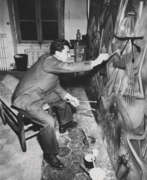

Roberto Sebastian Antonio Matta Echaurren was a Chilean artist, renowned for his significant contributions to the art world, particularly in painting and sculpture. As a figure deeply embedded in the realms of surrealism and abstract expressionism, Matta's works are celebrated for their complex, otherworldly landscapes and a profound exploration of the subconscious and architecture of the mind. His artistry is marked by fluid, organic forms and a masterful use of color, which set him apart as a visionary in the 20th century.
Matta's influence extended beyond the canvas, impacting the development of both European and American art scenes. His innovative techniques and philosophical inquiries into the nature of reality and human consciousness pushed the boundaries of traditional art forms, making him a pivotal figure among surrealists and later, abstract expressionists. Matta's work is characterized by its evocative, dream-like quality, and his ability to translate psychological concepts into visual spectacles has left a lasting legacy in the art world.
Among his renowned works, Matta's paintings are held in prestigious museums and galleries worldwide, including the Museum of Modern Art in New York and the Tate Modern in London. These institutions house pieces that showcase his unique blend of surrealism and abstract expressionism, offering art lovers and collectors a glimpse into his profound and imaginative universe. For those fascinated by the convergence of culture, art, and psychology, Matta's oeuvre presents an inexhaustible source of exploration and inspiration.
For collectors and experts in art and antiques, the legacy of Roberto Sebastian Antonio Matta Echaurren offers a rich field of discovery and appreciation. His contributions to the realms of painting and sculpture continue to resonate, providing deep insights into the capabilities of artistic expression. To stay informed about new product sales and auction events related to Matta's works, we invite you to sign up for updates. This subscription is your gateway to the latest in the world of this unparalleled artist, ensuring you never miss an opportunity to engage with the art and culture that Matta so vividly represented.
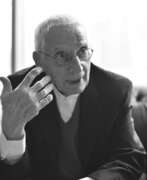

Alessandro Mendini was an Italian designer and architect. He played an important part in the development of Italian, Postmodern, and Radical design. He also worked, aside from his artistic career, for Casabella, Modo and Domus magazines.
The character of his design is marked by what was his strong interest in mixing different cultures and different forms of expression; he created graphics, furniture, interiors, paintings and architecture and also wrote several articles and books. He was renowned as an enthusiastic member of jury in architectural competitions for young designers. He taught at the University of Milan.
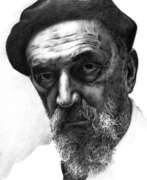

Ivan Meštrović was a Croatian sculptor of the twentieth century. He is known as a master of monumental fine art. Meštrović was also an architect and a writer, and at the beginning of his professional career he painted oil paintings.
Throughout his life, Ivan Meštrović traveled extensively around the world and studied the works of famous sculptors of various eras. In his works, he combined elements of all kinds of art styles, from antiquity and the Renaissance to Art Nouveau and Symbolism.
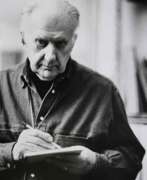

Gabriele Mucchi was an Italian painter, graphic artist and architect. He is considered a co-founder of New Realism.
Gabriele Mucci studied civil engineering and architecture at the University of Bologna. His name became known outside Italy for his impressive frescoes, and his studio became a meeting place for the anti-fascist group Corrente.
